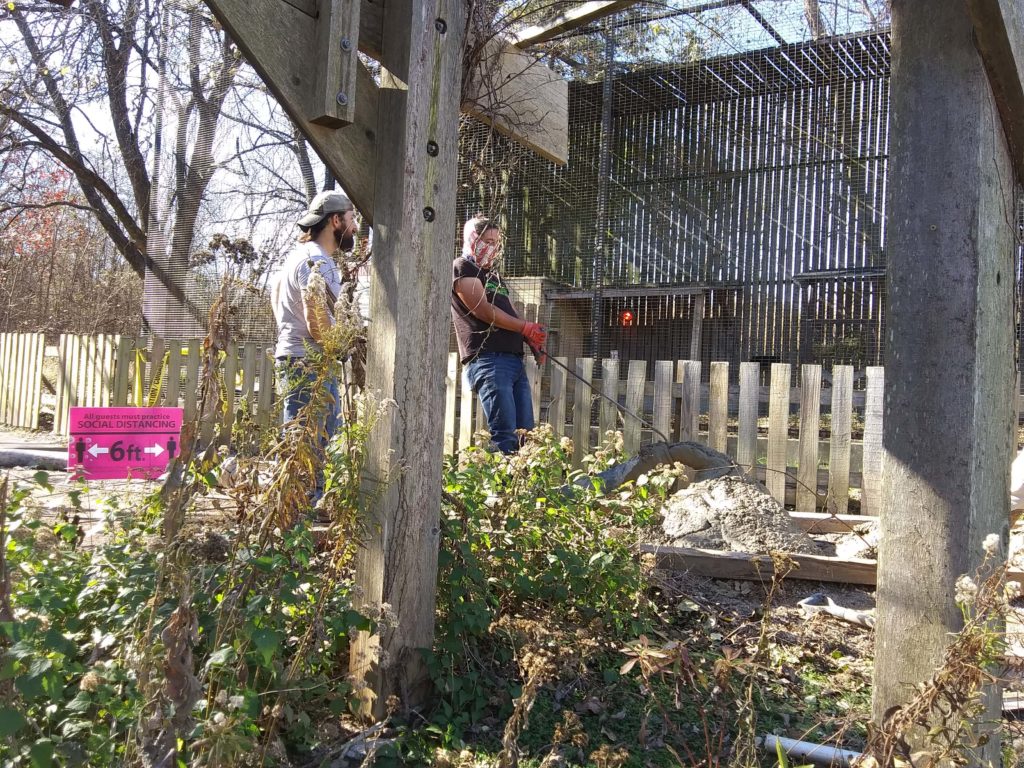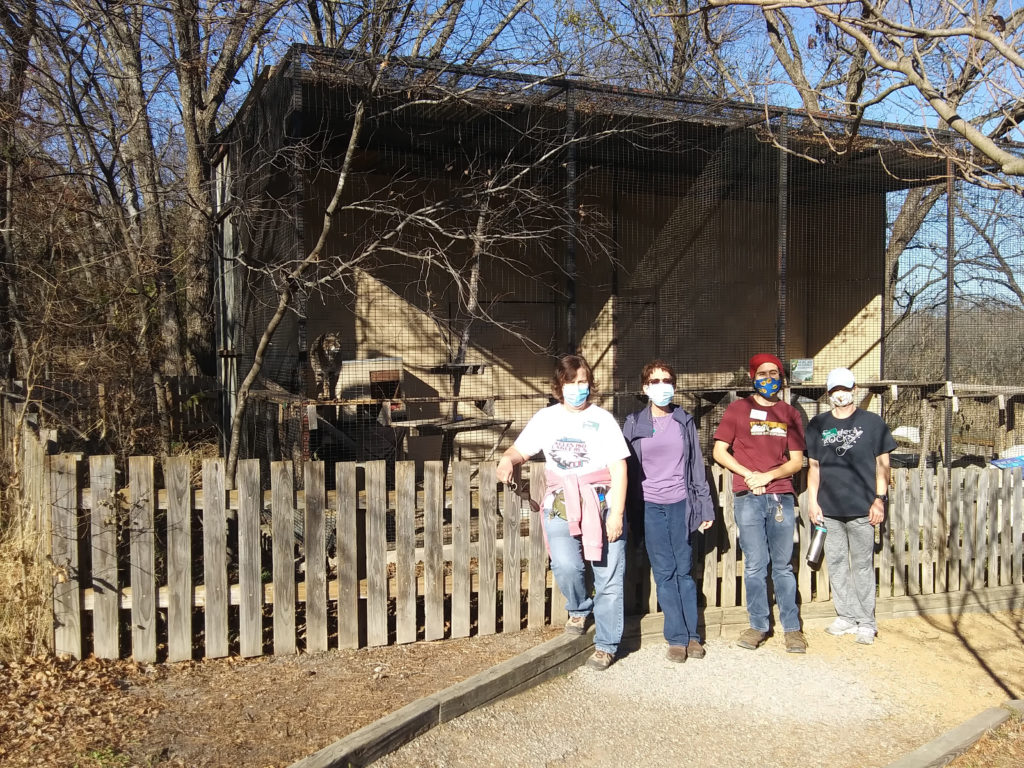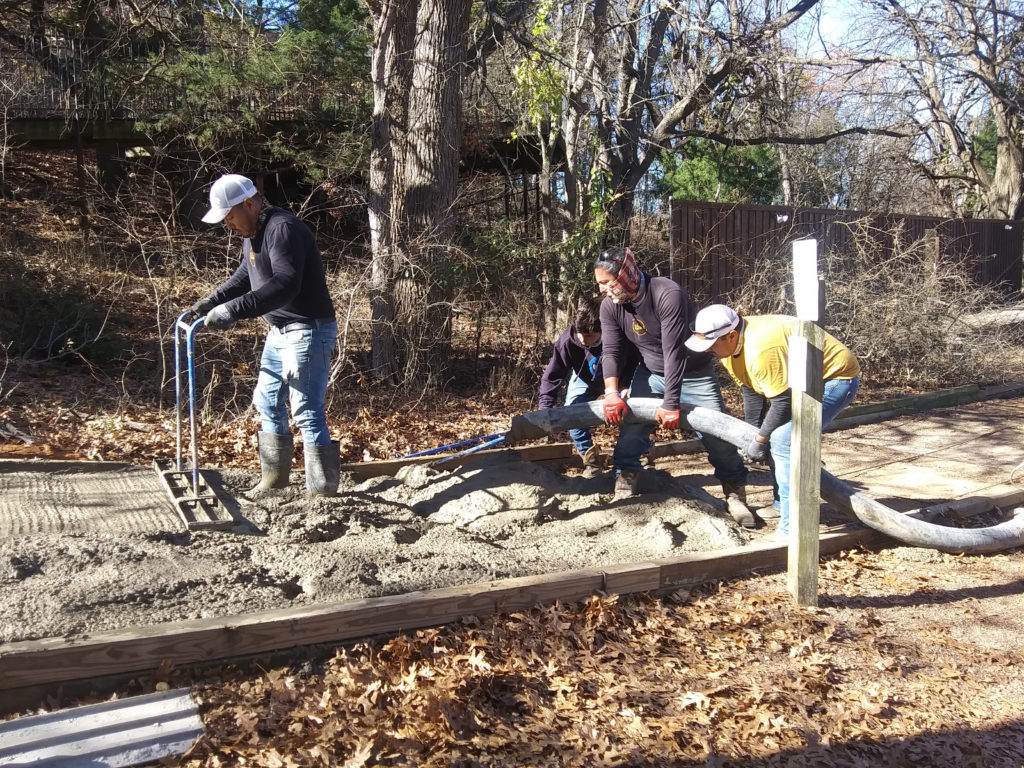By: Deborah Canterbury

It was a joint effort between the Heard animal team, the Celina based concrete company and volunteers including Blackland Prairie Master Naturalists who received emergency approval to monitor the wellness of the animals whose homes are along the trail to and around the Butterfly Garden.
Imagine a paving company whose team is so dedicated to the Heard mission that they do a major portion of prep work without power tools so not to scare Nibbles the cay, the latest raccoon acquisition, bobcats Elliott and Devon, and the deer and fox.

Michele Dudas explained to the crew and volunteers what stress signals to look for and when to quit, offer a small treat or speak to them in a calm manner and walk by as the daily visitors do. A quiet down times were expected and planned for. Her team plus volunteers were posted at each habitat. In a few cases the museum staff most familiar with a specific animal entered the enclosure to calm them with their presence. The major problem? Myopathy. Capture myopathy is also known as white muscle disease. When the muscle is used, its metabolism changes from using oxygen to using stored energy in the muscle. This leads to a buildup of lactic acid that goes into the bloodstream where it changes the pH of the body and affects the heart output. If the heart does not pump correct oxygen to the muscle, the muscle starts to die. Over the next week or so, the product produced by the muscle’s death damages the kidney and affects other organs. All but the mid trail between butterfly house and deer remains unpaved. A job well done by all.


They worked in sections, were quiet in their conversations and took time to learn about the residents. Owner said it was the hardest job of his 30 years.


